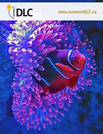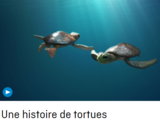
Biology 30 - Populations and Evolution Part 1
- Subject:
- Biology
- Author:
- Distance Learning Centre
- Date Added:
- 04/11/2018

Biology 30 - Populations and Evolution Part 1

Species extinction is happening at an alarming rate according to scientists. In this lesson, students are asked to consider why extinction is a problem that we should concern us. They are taught that destruction of habitat is the main reason many species are threatened. The lesson explores ways that engineers can help save endangered species.

Real science, real stories, and real data to engage students in exploring the living world.
BioInteractive offers an array of engaging resources including videos, simulations, virtual labs, and classroom activities, all designed to bring biological research to life. These resources are accompanied by thorough teacher guides written by educators.
Covering topics like evolution, ecology, genetics, biodiversity, and human health, the activities are based on real research, such as data from Gorongosa National Park's trail cameras used to create biomass pyramids. Teachers can easily navigate through the materials by topic or resource type, with options like Collections or Short Courses available. Additionally, film guides, posters, and downloadable apps are provided to support classroom integration.
Create a free account to connect with educators, access teaching tools, explore the resource library and create custom resource collections.
Definitely look at the Resource Playlists.

This unit covers the processes of photosynthesis, extinction, biomimicry and bioremediation. In the first lesson on photosynthesis, students learn how engineers use the natural process of photosynthesis as an exemplary model of a complex yet efficient process for converting solar energy to chemical energy or distributing water throughout a system. In the next lesson on species extinction, students learn that it is happening at an alarming rate. Students discover that the destruction of habitat is the main reason many species are threatened and how engineers are trying to stop this habitat destruction. The third lesson introduces students to the idea of biomimicry or looking to nature for engineering ideas. And, in the fourth and final lesson, students learn about a specialty branch of engineering called bioremediation the use of living organisms to aid in the clean up of pollutant spills.

Great, short, engaging videos to explain all things about our awesome planet! There are tons of great animal videos here.
These videos can answer a lot of the "wonders" students have.

This activity illustrates the interrelationship between science and engineering in the context of extinction prevention. There are two parts to the activity. The first part challenges students to think like scientists as they generate reports on endangered species and give presentations worthy of a news channel or radio broadcast. The second part puts students in the shoes of engineers, designing ways to help the endangered species.

Ce court métrage d’animation image par image raconte le périlleux parcours de la tortue marine, une espèce en grave danger d'extinction. Touchant et universel, Une histoire de tortues illustre toute la beauté des écosystèmes où vivent ces fascinantes créatures.
**Il existe une mini-leçon pour ce métrage d'animation sur ce site.
Les élèves se familiarisent avec les notions de tortue de mer et tortue de terre, prédateurs naturels des tortues de mer. Ils suggèrent des raisons pour lesquelles les jeunes tortues sont plus vulnérables que d’autres nouveau-nés dans la nature.